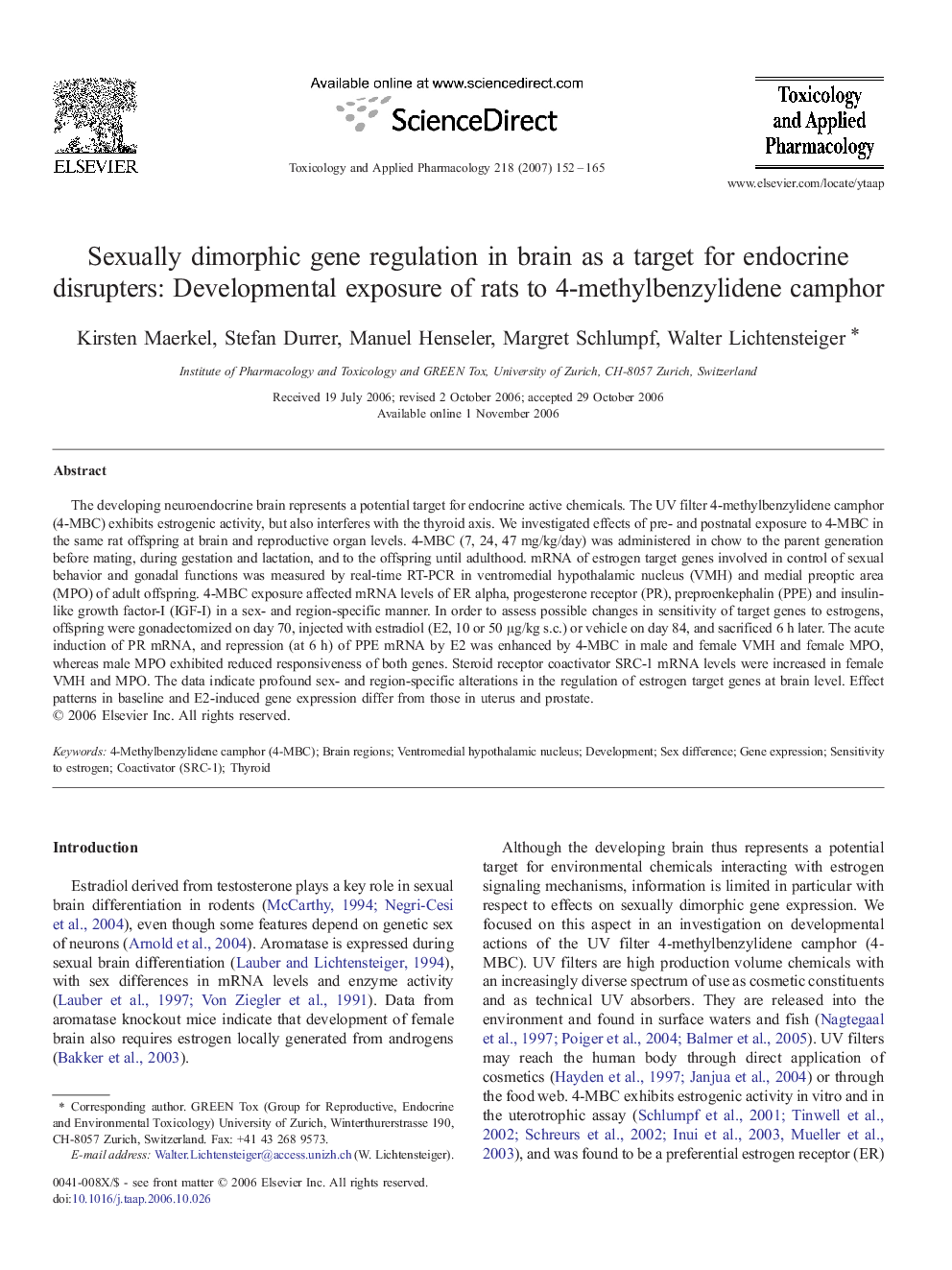| Article ID | Journal | Published Year | Pages | File Type |
|---|---|---|---|---|
| 2571070 | Toxicology and Applied Pharmacology | 2007 | 14 Pages |
The developing neuroendocrine brain represents a potential target for endocrine active chemicals. The UV filter 4-methylbenzylidene camphor (4-MBC) exhibits estrogenic activity, but also interferes with the thyroid axis. We investigated effects of pre- and postnatal exposure to 4-MBC in the same rat offspring at brain and reproductive organ levels. 4-MBC (7, 24, 47 mg/kg/day) was administered in chow to the parent generation before mating, during gestation and lactation, and to the offspring until adulthood. mRNA of estrogen target genes involved in control of sexual behavior and gonadal functions was measured by real-time RT-PCR in ventromedial hypothalamic nucleus (VMH) and medial preoptic area (MPO) of adult offspring. 4-MBC exposure affected mRNA levels of ER alpha, progesterone receptor (PR), preproenkephalin (PPE) and insulin-like growth factor-I (IGF-I) in a sex- and region-specific manner. In order to assess possible changes in sensitivity of target genes to estrogens, offspring were gonadectomized on day 70, injected with estradiol (E2, 10 or 50 μg/kg s.c.) or vehicle on day 84, and sacrificed 6 h later. The acute induction of PR mRNA, and repression (at 6 h) of PPE mRNA by E2 was enhanced by 4-MBC in male and female VMH and female MPO, whereas male MPO exhibited reduced responsiveness of both genes. Steroid receptor coactivator SRC-1 mRNA levels were increased in female VMH and MPO. The data indicate profound sex- and region-specific alterations in the regulation of estrogen target genes at brain level. Effect patterns in baseline and E2-induced gene expression differ from those in uterus and prostate.
